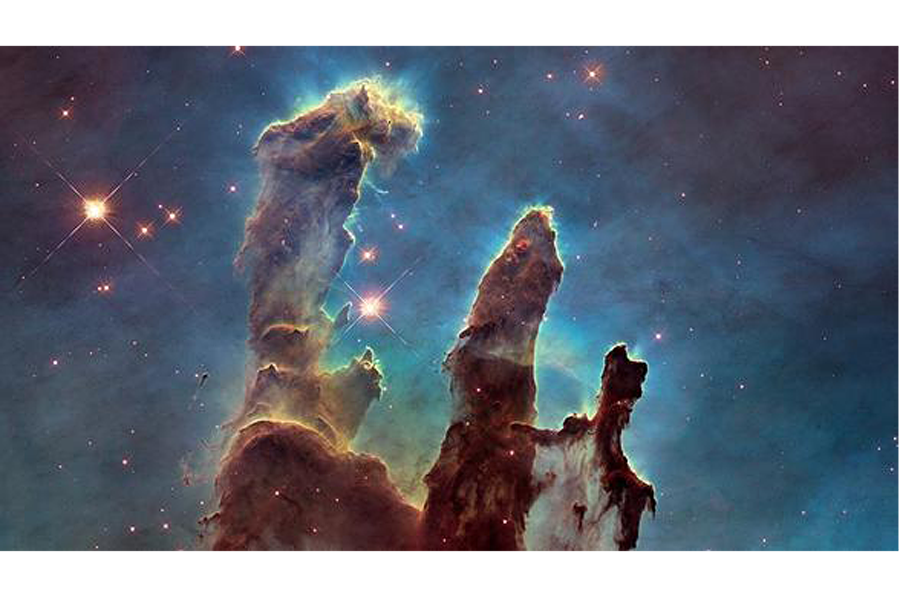Astronomers reveal spectacular new Hubble image
Loading...
Sen—Incredible new images have been released to celebrate a quarter century of operation by the Hubble Space Telescope. They return to the telescope's most famous target, revealing the famous Pillars of Creation as never seen before, 20 years after the initial mosaic was made public.
The original image of the Pillars of Creation that form part of the larger Eagle Nebula was taken in 1995 using Hubble's Wide Field Planetary Camera 2. Using the replacement Wide Field Camera 3, installed in 2009 during Hubble's last servicing mission with its higher resolution and wider field of view, the Hubble team re-observed the nebulous structure.
These breathtaking new images, showing a deeper level of detail not seen before in both visible and infrared light, were revealed at the American Astronomical Society meeting in Seattle, Washington.
The Eagle Nebula, also known as M16 and found in the constellation Serpens, is a vast "stellar nursery" 6,500 light years away that spans approximately 77 by 50 light-years. New stars are formed in several regions inside the giant cloud.
Through the compression and collapse of huge amounts of dust and hydrogen gas by gravitational forces, nuclear fusion is ignited as the density and temperature increases and a new shining star is born. It is believed that our own Sun may have formed within a similar structure. The Pillars, reaching up to 4 light-years in height, are one such star-forming region within the Eagle Nebula.
Although they may look calm and majestic on first glance, the Pillars are in fact extremely turbulent. The violent ultraviolet radiation emitted by the baby stars is stripping the constituent gas of its electrons (called "ionizing") and heating it up.
This increase in temperature is what lights up the Pillars and the surrounding nebula. It is these same new stars that are actively stripping away the gas from the imposing columns with their strong stellar winds, slowly eroding them away and blowing them into space in streams that are particularly noticeable around the top of the left-hand column.
“This was the first time we had directly seen observational evidence that the erosionary process, not only the radiation but the mechanical stripping away of the gas from the columns, was actually being seen," Paul Scowen of Arizona State University in Tempe told HubbleSite.
The visible light image is a false-colour composite, where the oxygen emission is blue, sulphur is orange, and hydrogen and nitrogen are green.
When directly comparing the 1995 and 2014 images, it became apparent that one feature has actually grown in size by an extra 60 billion miles (nearly 100 billion km) in the intervening time.
This jet-like feature may have been ejected from a newly formed star and could be travelling at speeds of around 450,000 miles per hour (750,000 km per hour).
The new near-infrared image, dappled with stars, highlights the densest areas and gives clues as to why the Pillars exist in that form to begin with: the ends of each column are very dense which creates a preservative shadow effect on the gas below, offering them some protection from the destructive ultraviolet radiation to produce the elongated structures.
Unlike visible light, the infrared wavelengths of light can penetrate through the gas and dust to reveal what has previously been hidden—in this case, the light of the newly formed stars and beyond.
Hubble's 25th anniversary will continue to be celebrated throughout 2015.
Related Links:
Space telescope's new views of the horsehead nebula
Hubble shows turbulent star-making region
Original story from Sen. © 2015 Sen TV Limited. All rights reserved. This material may not be published, broadcast, rewritten or redistributed. For more space news visit Sen.com and follow @sen on Twitter.







